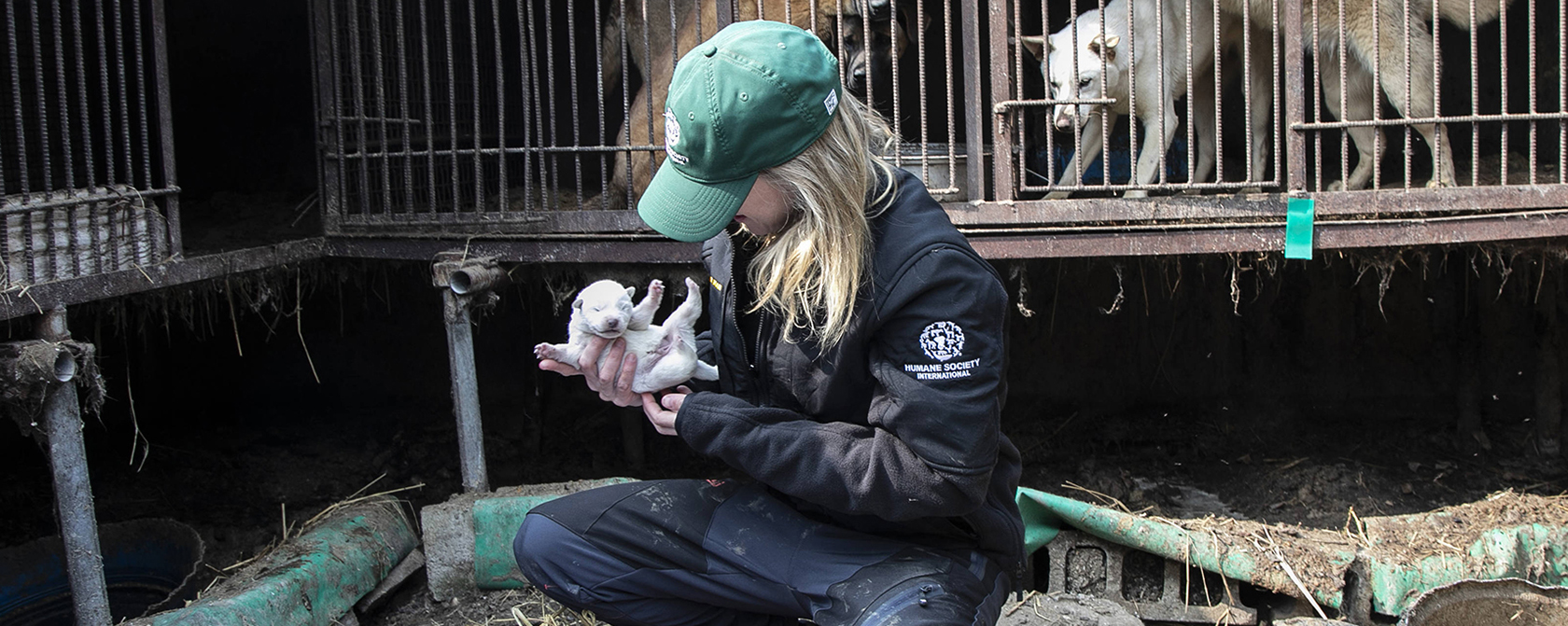By Sara Amundson and Kitty Block
A soldier seeking to bring home a dog they’d befriended while serving abroad. The diplomatic or military family leaving for or returning home at the conclusion of an overseas assignment. The traveler who fell in love with a dog in an animal shelter or rescue station in another country. The animal organization seeking to transport dogs from lives of uncertainty, distress or peril to the welcoming hearts and hearths of new and loving families. Starting August 1 this year, these are just some of the people and animals who could be adversely affected by a new federal rule on the importation of dogs from other countries to the U.S.
We are disappointed in this final rule. It is not what we’d hoped for, or what we campaigned for. Issued by the Centers for Disease Control, it prohibits entry for any dog less than 6 months old. (This was already a rule for commercial dog imports under the U.S. Department of Agriculture, but now the CDC’s rule makes the puppy ban total.) For those seeking to travel with a dog over 6 months old, travelers must submit pre-travel proof of animals’ microchipping as well as required owner contact and dog information via a CDC-approved system, which generates an automatic receipt that must be presented to the airline prior to boarding. Additional requirements depend on where a dog is traveling from and whether the dog was vaccinated in the U.S. but could serve to present serious delays for those seeking to travel with dogs. The rule also requires that all dogs entering the U.S. be microchipped, which may add an extra hurdle to families trying to flee crisis situations abroad with their pets.
But there are deeper and broader issues that we believe the final rule fails to account for. In the very near future and beyond, there may be an increasing need for the U.S. to accommodate more animals arriving via rescue and individual adoption. Climate change and other factors are creating more emergency situations all over the world, which in turn create more animals in need of help, rescue and adoption. But this rule throttles the ability of rescue organizations to respond to that need. Animal welfare organizations such as ours that save animals from disasters as well as from systemic cruelties will need to quickly pivot in order to ensure that our lifesaving work can continue for dogs in harm’s way abroad.
The new rule’s strictures are especially disheartening considering that from the outset we supported the intention and core objective of the CDC in issuing a rule. We believe it is critical to ensure that animals and their families in this country be protected from rabies, and to do so, we need to know that dogs coming into the U.S. are rabies-free. Part of the challenge involves public education. It’s important that travelers understand and recognize rabies as a serious threat and that they take responsibility for ensuring that the animals they bring with them are properly vaccinated.
Making sure these public safety measures are in place is essential, especially since the capability to legally import dogs into the U.S. can save the lives of dogs in a range of instances. Some of these scenarios are truly desperate situations involving natural disasters and emergencies, while others involve individuals, like soldiers or tourists, seeking to adopt and/or bring animals home, while still others are major efforts to rescue and relocate dogs from systemic cruelty, like South Korea’s dog meat farms, as our international team has done.
In the months since the CDC announced its plans to issue a rule, we argued for a nuanced approach, one that makes legal imports both safe and easy, in the interests of all. The U.S. has been largely free of dog rabies since 2007, the result of broad-scale implementation of dog vaccination, good management and public education by animal care agencies and public health authorities. Sensible and realistic disease prevention requirements are necessary and they’re good for all of us, both people and animals.
In that vein, we argued against the proposed requirement that travelers be able to document a dog’s travel history and whereabouts for six months prior to entry, even if the dog was not coming from a country deemed high risk for rabies by the CDC. This requirement does not seem sensible or realistic, and it is unfortunately maintained in the final rule. The requirement complicates personal travel and emergency rescue work for those seeking to assist animals in need. In emergency situations, like the aftermath of a hurricane, for example, obtaining proof of a dog’s whereabouts might be impossible for families or rescue workers in high-stress situations.
We also made the strong point in our communications with the CDC that if those bringing dogs into the U.S. can provide documentation that the animals meet all requirements for microchipping, rabies vaccination and rabies antibody testing, it is unnecessary to ask for proof that a dog has not been in a high-risk rabies country for the last six months. Unfortunately, however, the rule requires this proof and if importers cannot meet the requirements, they may face quarantine times before a dog will be allowed into the country.
Now it is urgent to get the word out about these new requirements, which could impact many families traveling with dogs. We must now try to help prevent scenarios in which families are suddenly separated from their dogs. In the final rules, a dog may be returned to the country of origin within 72 hours if they arrive in the U.S. without meeting these complicated regulations. We will keep pushing for approaches to this issue that more reasonably take into account current realities some people face that make adhering to such strict rules so difficult. Animals and those who love them simply deserve nothing less.
Kitty Block is CEO of the Humane Society of the United States.
